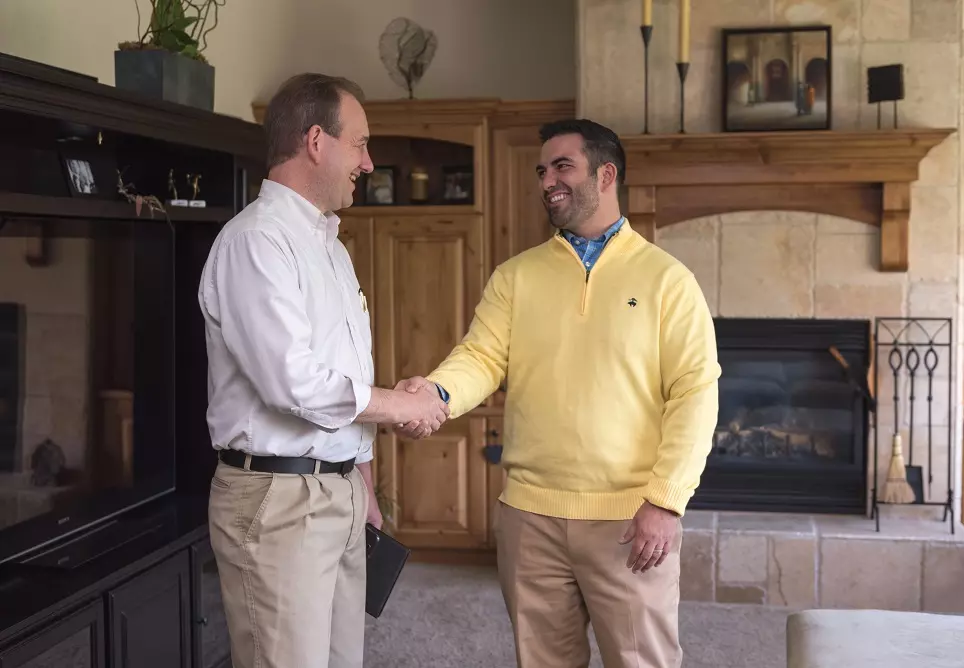Residents Transition from Apartment Living to a Single-Family Residence
Every year, one in every six Americans moves, and the average American moves 11.7 times in his/her lifetime. With such regular mobility, there’s a good chance that people will spend significant time living in apartments, but at some point, may lease a single-family residence. For many, the transition from apartment to single-family houses may be easy enough, but issues that are taken care of in an apartment community are many times the responsibility of the resident in a single-family residence lease.
For many, the transition from apartment to single-family houses may be easy enough, but issues that are taken care of in an apartment community are many times the responsibility of the resident in a single-family residence lease.
For clients of Real Property Management offices, we discuss these differences with residents prior to their moving in. Listed below are some important aspects discussed with potential renters. Although many of these aspects may seem obvious to you as a property owner, these may be foreign to a first-time single family home tenant. It’s highly unlikely that while living in an apartment a resident ever performed, or even thought about, yard care. As such, upon moving into a single-family house, they may assume that the yard care is taken care of by the property owner. However, this often is not the case, and when they move into a rental home, need to know what their responsibilities are. In particular, residents moving from an apartment to single family housing might need to be told step by step what is expected with regard to lawn care. This should include lawn care costs, frequency, as well as mowing, watering, weeding and any other items that will need to be tended to by the renter.
Another option is that residents may need to be connected with a local yard care company, although even with this option, they should be encouraged to understand basic yard care aspects so that they can save some money rather than calling a specialist every time the yard needs sprucing up. Alternately, a property owner could hire landscape care and add the cost to the monthly rent. Another aspect to discuss are utility bills. For many apartment rentals, gas, water, electricity, cable, and internet bills or any portion thereof may be included as part of the rental payment. However, this may not be the case for a rental home, and so the renter’s responsibility should be discussed, along with where to set up accounts, as well as penalties to the lease if the utilities are ever disconnected.
Also, plumbing issues need to be discussed. While apartments have interconnected plumbing, in a single-family home, the entire plumbing system is used exclusively by the tenants. Therefore, they must understand how the system works (is there a septic tank?) and whom to call in case there is need of repair. They should also obtain toilet and  sink plungers and know how to correct basic blockage in both the toilets and sinks. This is especially important if the repair is necessitated by the renters negligent actions (toothbrush in the toilet, improper use of garbage disposal etc.
sink plungers and know how to correct basic blockage in both the toilets and sinks. This is especially important if the repair is necessitated by the renters negligent actions (toothbrush in the toilet, improper use of garbage disposal etc.
Apartment housing has significantly different lighting needs, and much, if not all, is taken care of by the apartment management, including in many cases, light bulbs. However, when it comes to single family homes, the new resident should be advised not only about their responsibility to change the bulbs indoors, but also for the outdoor lights, such as the driveway and the yard. These factors await residents who move from apartments into single family homes. With the guidance and direction from the landlord, or professional property management firms such as Real Property Management, the resident’s transition will be seamless and hassle free. Want to learn more about helping your new resident transition from apartment to single family housing? Contact your nearest Real Property Management office.
We are pledged to the letter and spirit of U.S. policy for the achievement of equal housing opportunity throughout the Nation. See Equal Housing Opportunity Statement for more information.
Get the Neighborly App
In addition to Real Property Management's expert skills in managing your rental property, you can utilize Neighborly's other brands to maintain and enhance your home. Use the Neighborly App to get connected to local home service professionals. Download and receive offers only available on the App.
Depending on current health and safety regulations in your area, some of the services mentioned in this post may not be available. Neighborly service providers will follow the latest health and safety guidelines provided by the local and state governments. Please check with your local Neighborly service provider for details at the time you need service(s).






